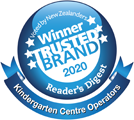LATEST STORIES
Nurturing awe and wonder at BestStart Kapiti
Children are curious by nature, everything is new and the desire to explore, discover and understand their world is a powerful motivator for learning. So, it’s no surprise there’s a new pedagogy gaining momentum in early years education that builds on inquisitive behaviour and is aptly named, the Curiosity Approach.
At our Centre we have been using the curiosity approach within our Reggio Inspired Philosophy. We set up provocations as an invitation to learn and spark awe and wonder. Recently we introduced window prisms into the environment. The children started out by discovering all the rainbows around our Centre created by our window prisms. We found them on our walls, the floor, and even on our couch!
It was fun for the children to see how the rainbows moved to different locations as the day went on, and how they disappeared completely when the clouds came in. The older children discovered that white light was a combination of all the colours of the rainbow.
During this investigation the children found rainbows in bubbles, CD’s and even in the hose water as it sprayed across the garden. All this learning wouldn’t have happened without a key ingredient curiosity and an emerging understanding of the power of awe within science! We also introduced a solar water fountain to the delightful of our children.
This sparked lots of conversations and working theories around how the sun made energy. Children are hands on learners keen to explore and as part of developing scientific knowledge we wanted children to learn how gloop worked. Cornflour is made out of many long, stringy particles, which don’t dissolve in water, but instead spread out. If you apply pressure to it, the particles join together and the mixture feels solid. If it is held up, the particles are free to slide over each other and the mixture feels like a dribbly liquid. This is always a favourite with the children.






